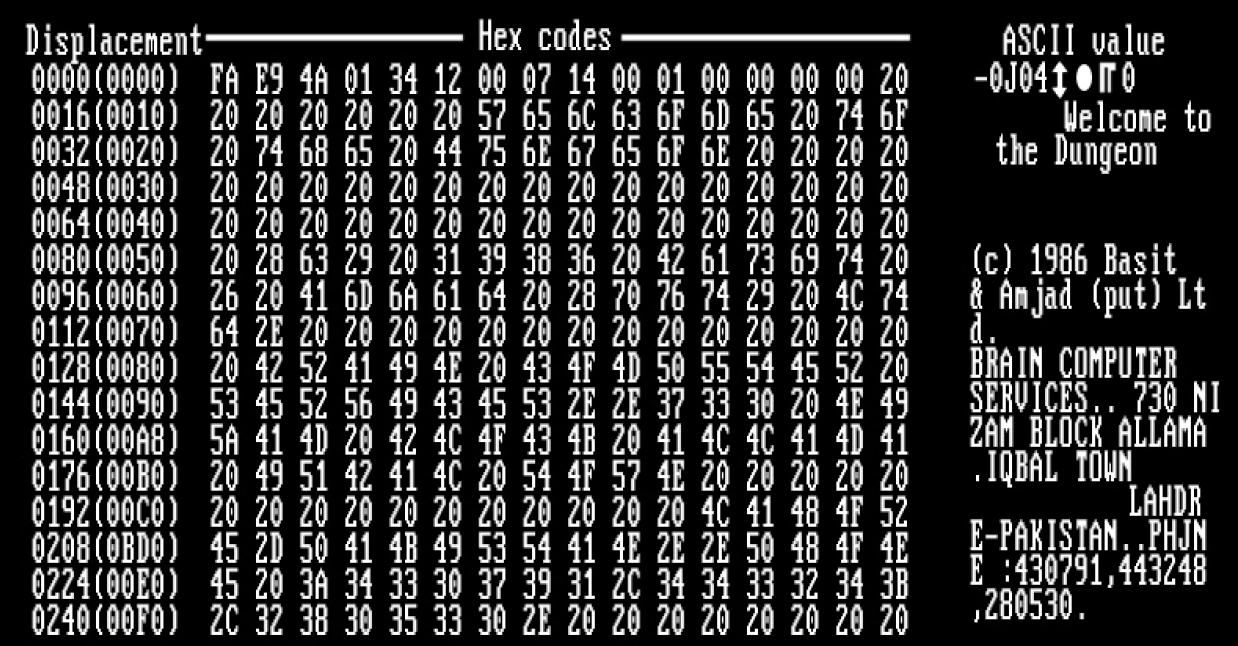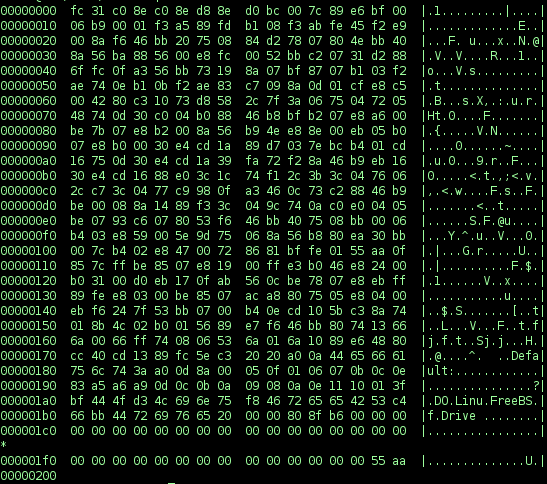|
Bliss (virus)
Bliss is a computer virus, introduced in 1997, which aims to infect Linux systems. When executed, it attempts to attach itself to Linux executable files, to which regular users do not have access. In the case of the alpha version, this prevents the executables from running, so users notice it immediately. Although it was probably intended to prove that Linux can be infected, it does not propagate very effectively because of the structure of Linux's user privilege system. The Bliss virus never became widespread, and remains chiefly a research curiosity. After the Staog virus it is the second known Linux virus. When the Bliss virus was released, antivirus software vendors and Linux distributions released security advisories to notify users of the potential risks. Debian still lists itself as vulnerable to the Bliss virus. However, due to the requirement for infection to occur under the root user, the risk is listed as minimal. See also *Linux malware Linux malware includes vir ... [...More Info...] [...Related Items...] OR: [Wikipedia] [Google] [Baidu] |
Computer Virus
A computer virus is a type of computer program that, when executed, replicates itself by modifying other computer programs and inserting its own code. If this replication succeeds, the affected areas are then said to be "infected" with a computer virus, a metaphor derived from biological viruses. Computer viruses generally require a host program. The virus writes its own code into the host program. When the program runs, the written virus program is executed first, causing infection and damage. A computer worm does not need a host program, as it is an independent program or code chunk. Therefore, it is not restricted by the host program, but can run independently and actively carry out attacks. Virus writers use social engineering deceptions and exploit detailed knowledge of security vulnerabilities to initially infect systems and to spread the virus. Viruses use complex anti-detection/stealth strategies to evade antivirus software. Motives for creating viruses can inclu ... [...More Info...] [...Related Items...] OR: [Wikipedia] [Google] [Baidu] |
Linux
Linux ( or ) is a family of open-source Unix-like operating systems based on the Linux kernel, an operating system kernel first released on September 17, 1991, by Linus Torvalds. Linux is typically packaged as a Linux distribution, which includes the kernel and supporting system software and libraries, many of which are provided by the GNU Project. Many Linux distributions use the word "Linux" in their name, but the Free Software Foundation uses the name "GNU/Linux" to emphasize the importance of GNU software, causing some controversy. Popular Linux distributions include Debian, Fedora Linux, and Ubuntu, the latter of which itself consists of many different distributions and modifications, including Lubuntu and Xubuntu. Commercial distributions include Red Hat Enterprise Linux and SUSE Linux Enterprise. Desktop Linux distributions include a windowing system such as X11 or Wayland, and a desktop environment such as GNOME or KDE Plasma. Distributions intended for ser ... [...More Info...] [...Related Items...] OR: [Wikipedia] [Google] [Baidu] |
Executable
In computing, executable code, an executable file, or an executable program, sometimes simply referred to as an executable or binary, causes a computer "to perform indicated tasks according to encoded instruction (computer science), instructions", as opposed to a data (computing), data file that must be interpreted (parser, parsed) by a program to be meaningful. The exact interpretation depends upon the use. "Instructions" is traditionally taken to mean machine code instructions for a physical central processing unit, CPU. In some contexts, a file containing scripting instructions (such as bytecode) may also be considered executable. Generation of executable files Executable files can be hand-coded in machine language, although it is far more convenient to develop software as source code in a high-level language that can be easily understood by humans. In some cases, source code might be specified in assembly language instead, which remains human-readable while being close ... [...More Info...] [...Related Items...] OR: [Wikipedia] [Google] [Baidu] |
Research
Research is "creativity, creative and systematic work undertaken to increase the stock of knowledge". It involves the collection, organization and analysis of evidence to increase understanding of a topic, characterized by a particular attentiveness to controlling sources of bias and error. These activities are characterized by accounting and controlling for biases. A research project may be an expansion on past work in the field. To test the validity of instruments, procedures, or experiments, research may replicate elements of prior projects or the project as a whole. The primary purposes of basic research (as opposed to applied research) are documentation, Discovery (observation), discovery, interpretation (philosophy), interpretation, and the research and development (R&D) of methods and systems for the advancement of human knowledge. Approaches to research depend on epistemology, epistemologies, which vary considerably both within and between humanities and sciences. ... [...More Info...] [...Related Items...] OR: [Wikipedia] [Google] [Baidu] |
Staog
Staog was the first computer virus written for the Linux operating system. It was discovered in the autumn of 1996, and the vulnerabilities that it exploited were fixed soon after. It has not been detected in the wild since its initial outbreak. Staog was able to infect Linux despite its security-oriented design which requires users and programs to log in as root before any drastic operations can be taken. It worked by exploiting some kernel vulnerabilities to stay resident. Then, it would infect executed binaries. Since it relied on fundamental bugs, software upgrades made systems immune to Staog. This, combined with its shot in the dark method of transmitting itself, ensured that it died off rather quickly. Staog was written in assembly language by the hacker group VLAD. See also *Linux malware Linux malware includes viruses, Trojans, worms and other types of malware that affect the Linux family of operating systems. Linux, Unix and other Unix-like computer operatin ... [...More Info...] [...Related Items...] OR: [Wikipedia] [Google] [Baidu] |
Antivirus Software
Antivirus software (abbreviated to AV software), also known as anti-malware, is a computer program used to prevent, detect, and remove malware. Antivirus software was originally developed to detect and remove computer viruses, hence the name. However, with the proliferation of other malware, antivirus software started to protect from other computer threats. In particular, modern antivirus software can protect users from malicious browser helper objects (BHOs), browser hijackers, ransomware, keyloggers, backdoors, rootkits, trojan horses, worms, malicious LSPs, dialers, fraud tools, adware, and spyware. Some products also include protection from other computer threats, such as infected and malicious URLs, spam, scam and phishing attacks, online identity (privacy), online banking attacks, social engineering techniques, advanced persistent threat (APT), and botnet DDoS attacks. History 1949–1980 period (pre-antivirus days) Although the roots of the computer ... [...More Info...] [...Related Items...] OR: [Wikipedia] [Google] [Baidu] |
Debian
Debian (), also known as Debian GNU/Linux, is a Linux distribution composed of free and open-source software, developed by the community-supported Debian Project, which was established by Ian Murdock on August 16, 1993. The first version of Debian (0.01) was released on September 15, 1993, and its first stable version (1.1) was released on June 17, 1996. The Debian Stable branch is the most popular edition for personal computers and servers. Debian is also the basis for many other distributions, most notably Ubuntu. Debian is one of the oldest operating systems based on the Linux kernel. The project is coordinated over the Internet by a team of volunteers guided by the Debian Project Leader and three foundational documents: the Debian Social Contract, the Debian Constitution, and the Debian Free Software Guidelines. New distributions are updated continually, and the next candidate is released after a time-based freeze. Since its founding, Debian has been developed openly ... [...More Info...] [...Related Items...] OR: [Wikipedia] [Google] [Baidu] |
Linux Malware
Linux malware includes viruses, Trojans, worms and other types of malware that affect the Linux family of operating systems. Linux, Unix and other Unix-like computer operating systems are generally regarded as very well-protected against, but not immune to, computer viruses. Linux vulnerability Like Unix systems, Linux implements a multi-user environment where users are granted specific privileges and there is some form of access control implemented. To gain control over a Linux system or to cause any serious consequences to the system itself, the malware would have to gain root access to the system. In the past, it has been suggested that Linux had so little malware because its low market share made it a less profitable target. Rick Moen, an experienced Linux system administrator, counters that: In 2008 the quantity of malware targeting Linux was noted as increasing. Shane Coursen, a senior technical consultant with Kaspersky Lab, said at the time, "The growth in Linux malwa ... [...More Info...] [...Related Items...] OR: [Wikipedia] [Google] [Baidu] |

.jpg)



